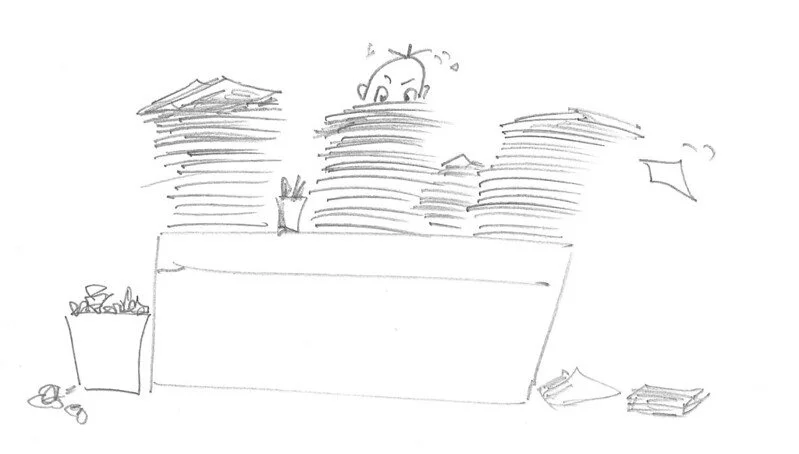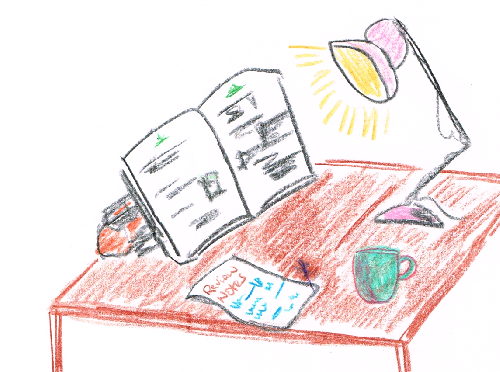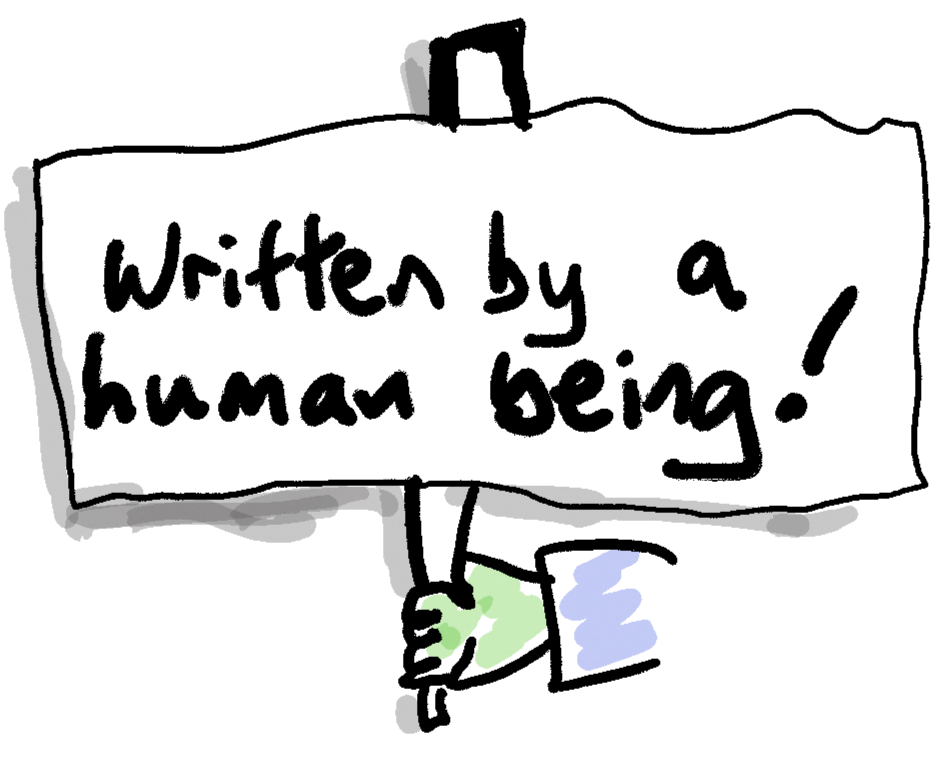Despite the relative paucity of immediately obvious National Curriculum links, teachers will find several of sections of this book to be highly engaging.
Read MoreICT and Citizenship
Do Citizenship and overlapping subjects like Personal, Social and Health Education (PSHE) have a relationship with ICT? I would suggest they do, in the following ways.
ICT as a facilitator
In a general sense, I believe that ICT can work with any subject in a facilitative way. It’s a discipline, by which I mean a way of looking at things, and a set of skills which together make it possible to do things that would otherwise be very difficult.
For example, at the most fundamental level ICT makes it relatively easy to obtain information. Making sure it’s good information is another matter, of course, but the point is that acquiring the information in the first place is reasonably painless.
It is also easy to collate and present information. For instance, any subject can, and has, benefitted from the existence of a well thought-out website. That’s why I was happy to publish two reviews of a new Citizenship website called Your Justice, Your World. If you read the reviews, one for primary (elementary) school teachers, the other for secondary (high) school teachers, you’ll notice that there is a lot of emphasis on how and whether the website works as a website, regardless of the content. The material is presented on a website, therefore the website has to be effective from an educational point of view: the medium is very much bound up with the message.
Modelling in its broadest sense is easy too. Videos abound of people in situations which youngsters in this country cannot even imagine, such as that experienced by the young lady in this video about human rights.
The effects of technology
One of the things I try to do on this website from time to time is look at issues arising from the deployment of technology, because that is on many ICT syllabuses. For example, I looked at what might happen in the event of a cyber-attack on the country. Topics like this blur the lines between technology and citizenship/social perspectives, providing a reason for the subject specialists in these areas in a school to do a bit of joint project planning.
E-safety issues
Finally, the use of technology, especially where it involves the internet, raises e-safety issues. This was very much in evidence throughout the Web 2.0 Projects book I’m currently putting together. One or two contributors to that have come up with the eminently sensible suggestion that e-safety and netiquette are issues which ought to be addressed within Citizenship and PSHE, and not only in ICT lessons.
Conclusion
ICT and citizenship do not have to be wholly separate topics, as I hope this article has shown. I believe that to be true of other subjects in the curriculum too. If you have ideas on how other subjects, such as History or Geography, relate to ICT, please considered suggesting an article you might write for these pages.
Review of Your Justice, Your World From a Primary/Elementary Perspective
Beatriz Lopez Tienza looks at this new website from a primary school’s perspective.
For the last couples of weeks I have had the chance to try this new website with my students. The website provides a number of lessons with matching activities. The lessons are based on an imaginary town and the issues surrounding this neighbourhood. The website´s layout is very clear and engaging, however for younger children brighter colours would make it more attractive. The first and second units, which are based in the new school, Crownford Rise, were the most suitable for the age group I teach (Year 2). The characters are primary school children who have the same problems as the children I teach. The third and fourth units were more complex, dealing with issues that at the moment do not affect the children in my class, which makes it difficult to role play the scenarios.
The website offers a good range of activities catering for all kinds of students, discussions, role play, worksheets and online activities which can be printed once they have been completed. It also offers extension activities for more able students. Students with special educational needs should be able to access these activities, although depending on their needs they may need adult support.
The content of the website is in line with the current National Curriculum requirements for PSHE and Citizenship as stated in each lesson plan. It will also be suitable when the new primary curriculum is in place, as it will address the main requirement, educate responsible citizens who would make a positive contribution to society. I have concentrated on the 7-11 activities, although some of my children are still only 6 years old.
Role-playing and reporting
When I first explained that we were going to do citizenship on the computer and that they were going to be able to play some interactive games, they felt very excited. Previously we had been able to use the computers to do some work related to citizenship, but they had never been able to play citizenship games on it. This has brought a new dimension to the subject and although they have always enjoyed it, throughout the week they kept asking me when they were going to do citizenship again.
We started with the first unit: WHAT ARE LAWS FOR? In this unit, children carried out the suggested role play activity. We set up a mock council meeting, which proved to be very successful. Most children are not part of the school council and at this age and they sometimes find it difficult to envisage how the school council works. I decided not to have children playing the part of the school governors, as this role is not clear to them, but we had pretend parents, teachers, children and neighbours (in case they wanted to say something about noise levels during playtime). They then became reporters.
I slightly changed this activity and instead of writing for a newspaper, they reported in the news, as I didn’t want the children to worry about the writing and miss the essential points of the lesson.
We answered the questions together and then, in groups they chose a sentence to report on. I found that the use of a pretend microphone helped! They also designed a leaflet for Martians. The stimulus for the activity was very successful, especially for boys, whose engagement at times can be a challenge. They love Martians and they enjoyed explaining the school rules in the leaflet.
Overall the unit was a success. Children felt engaged at all times and produced some great pieces of work. The only aspect that proved difficult with some children was the amount of reading that it was required to complete the online activities, for example, when playing the dominoes game, they needed to be able to read all five pieces of writing before matching them to the image. Also for the quiz, we had the same problem, we needed to solve the quiz as a group. However, we found a way around this difficulty by pairing more able and less able children, which is what I intend to do from now on.
Lesson structure
The lessons within the unit are structured in three main parts:
Discussion: I allowed about 10 minutes for this part of the lesson, as when children came to a decision on the issue proposed, they found it difficult to then consider other points of view.
Role Play: this was probably the most successful part of the lessons. Children understood the purpose of the activity and found no difficulty in becoming someone else, although as specified before, some roles were removed as they were not relevant to children of this young age.
Extension activities: These activities were also of their interest. In here they had the opportunity to record, in writing, orally or in pictures, their thinking and conclusions.
Finally I would like to add that the opportunity to print their own work when completing online activities was very well welcomed by the children, the print outs were clear and attractive. Overall I have found this website very useful. The opportunity to do citizenship online, children to play interactive games, following a story of “real” children and having a structured lesson plan to follow has been really successful, and therefore I plan to continue making use of it in the future.
Beatriz Lopez Tienza teaches Y2 and leads PSHE and Citizenship in Whitchurch CE Primary School, Hampshire. The school is set in the small town of Whitchurch, Hampshire. It has 287 number of children who come from the surrounding area.
See also our review of the YJYW website from a secondary perspective.
Review of Your Justice, Your World From a Secondary/High Perspective
Will Ross looks at this new website from a secondary school’s perspective.
This is a thorough resource on the justice system with a wide range of web-based activities and useful lesson ideas. It is not a one-stop-shop in terms of just leaving students to work through the units. However it is not designed to be used like this and If a teacher is willing to put in the time to work out what they want their students to learn and go through the teachers’ notes to support the web-based activities using this resource will be rewarding in terms learning and engagement of students.
Graphics and layout
The graphics on the whole are good. The cartoons are not too immature for older students but would still appeal to younger students. The use of the map seems a bit of a needless distraction as it adds little to the navigation and the moveable map in the circle at the bottom right corner of each activity seems to serve no purpose at all.
The layout is “busy” but clear. Occasionally during the activities it is difficult to locate what to do next in terms where the appropriate button is.
I think sight-impaired students would struggle with the size of the text and the intricacy of some of the drawings. However by providing the audio of the written elements it goes someway to combat this.
Age suitability
In terms of suitability for different age groups, I think this depends on how you choose to use it. Some Key Stage 3 students would struggle with the amount of text and written sections required with some activities. However if a teacher were to use this as a stimulus using the IWB it would be manageable.
Key Stage 4 students could to some degree be left to work independently with the activities. The print option also provides an opportunity to produce evidence of their learning. This is more valuable than the multiple choice assessments at the end of each section. These may be enjoyable for students but simply test on facts rather than learning across the unit.
Differentiation is mentioned in the “How to use this resource” section but this is a bullet pointed list of strategies that most teachers are well aware of.
The resources
The resources for 7 to 11 year olds could be used for more independent work with KS3 students and with those with special education needs in a more directed manner. This is due to less text and simpler interactive activities. However the topics are sometimes clearly for younger students making this troublesome, such as coming up with rules for your primary school.
In terms of meeting National Curriculum requirements for Citizenship, the web-based activities clearly meet some range and content in terms of legal rights and the justice system. It still requires the skill of the teacher to make sure they deal with the concepts and processes. The discussion, role plays and extension activities in the teacher notes give a useful steer for this. In terms of the National Curriculum links given within the teachers’ notes sections, I find some of these are not entirely accurate missing off some of the processes being used for activities.
The teachers’ notes contain a useful background information section with key terms and some links. The glossary pages are inexplicably numbered rather than alphabetised making navigation needlessly tricky. However within the text in the students’ activities any key words are underlined and when clicked give a succinct definition.
The useful links and resources section is fantastic covering a range of topics and containing some very good resources. Quite often links pages on education websites simply have every link and resource available with no quality assurance whereas there seems to have been a lot of care taken here.
The “How to use this resource” section is 6 web-pages and would be more palatable as a 1 or 2 page download. I initially did not realise there were 5 further pages resulting in me blindly struggling with the notes on the activities at first. My main concern with the resource as a whole in that it is just so big, though the designers have done their best to help with this by providing clear objectives for each section and easily navigable activities.
If teachers take the time to decide which sections are appropriate for their students, breaking up the web-based activities with the discussions and role plays, they will find this a fine and useful resource.
Will Ross is the Association of Citizenship Teachers’ Citizenship CPD Project Manager and Consultant.
See also Beatriz Lopez Tienza' review of the YJYW website from a primary/elementary perspective.
These articles first appeared in the newsletter, Computers in Classrooms.




